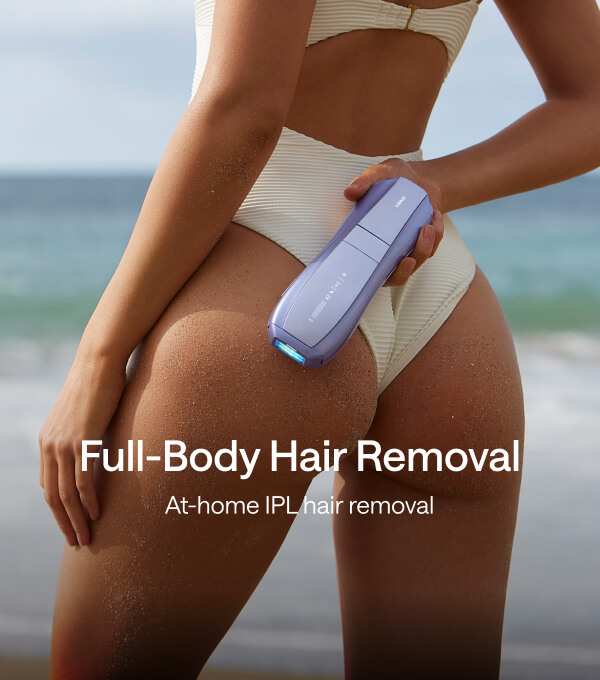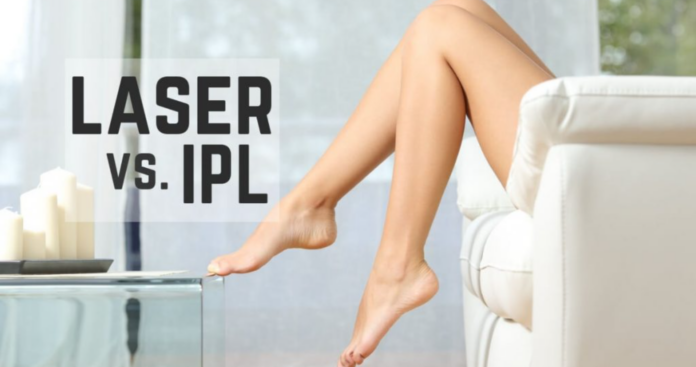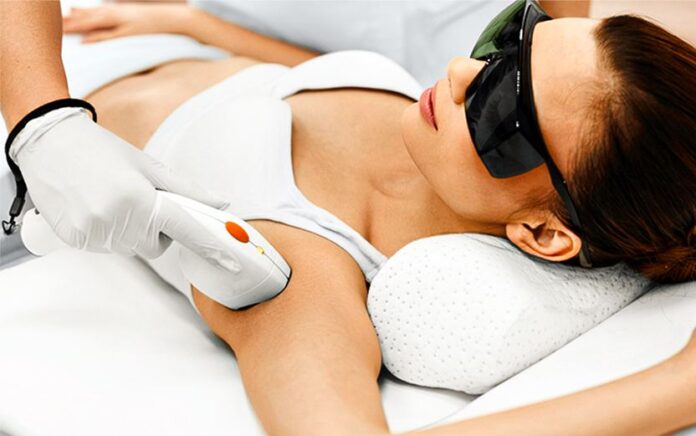“Beauty is pain” — or so the old saying goes. But what if it doesn’t have to be?
At-home laser hair removal is transforming how we approach personal care, offering a comfortable, effective solution to unwanted hair without the pain, expense, or hassle of salon visits. Thanks to advancements in technology, home-use devices are quickly becoming a trusted alternative. But how does a home laser vs. salon really compare? And most importantly, is at-home laser hair removal safe?
Dr. Davin Lim, a leading dermatologist, explains:
“What was only possible in a clinic a few years ago has become an effective and safe option for patients to undertake at their convenience and in the privacy of their own home.”
For many of my own patients, a personal device is not just an alternative but a better solution to traditional salon treatments.
Want to learn more? In this guide, I’ll break down how at-home laser hair removal works, compare it to professional treatments, and highlight what makes these devices a potential game-changer for your beauty routine.
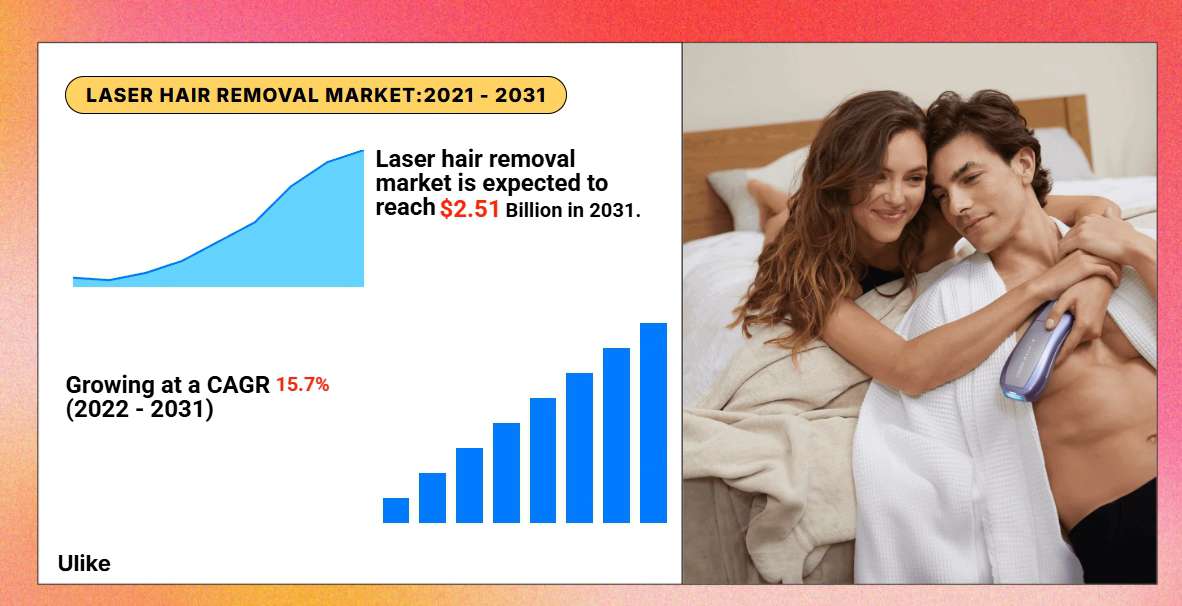
1. The Quiet Revolution in Hair Removal
Since the late 90s, laser hair removal has been gaining popularity for its long-lasting results. In the early days, this technology was synonymous with pain, yet consumers were collectively spending over $1 billion annually on treatments (Parker-Pope, 2002). Fast forward to today: breakthroughs in laser technology have made treatments far more comfortable, safer, and accessible.
In fact, market research projects the laser hair removal market to grow to $2–$5 billion by 2031, driven by the rising popularity of at-home devices. Laser hair removal at home uses similar light-based technologies, such as intense pulsed light (IPL), to safely target and destroy hair follicles, providing long-term hair reduction over multiple sessions (Leal-Silva & Leal-Delgado, 2020).
While these devices operate at lower energy levels than their professional counterparts, studies confirm they can deliver results with fewer side effects (Toosi et al., 2006). This simply means that the power of the laser being used is directly related to the results you’ll experience. The more powerful the laser, the faster you’ll see hair reduction, but the greater the risk of adverse effects such as pain and redness.
2. Why Is Laser Hair Removal at Home Viable Today?
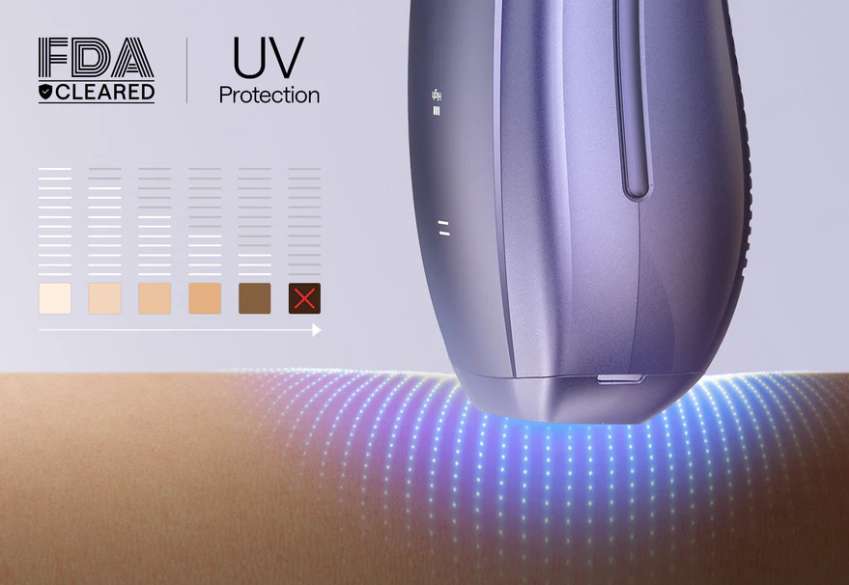 Technological Advancements: Professional Tech for All
Technological Advancements: Professional Tech for All
At the heart of laser hair removal is a technology called selective photothermolysis. It’s a mouthful, but the principle is simple: focusing light to heat and damage a target. Professional devices pulse concentrated light at specific wavelengths into hair follicles, where pigment in the follicles absorbs the energy, damaging the follicle and inhibiting future hair growth. At-home devices use the same principle but with lower energy settings, making them safer for unsupervised use.
When comparing these two types of devices, studies show no significant difference in short-term effectiveness between professional devices and IPL, but note that diode lasers have a higher incidence of side effects (Toosi et al., 2006). So, despite the lower energy, these home devices are still capable of reducing hair growth and producing smooth skin, although the process may take longer compared to professional treatments.
If you’re considering trying laser hair removal at home, you’ll want to choose a device with certain features to get the most comfortable experience:
-
Cooling Technology for Comfort
Modern devices, such as the Ulike Air 10 IPL Device, include built-in cooling systems to reduce heat and discomfort during treatments.
-
Smart Sensor Technology for Personalization
Advanced devices can detect your skin tone and hair color, automatically adjusting energy levels for safety and effectiveness.
Medical Certifications: Safety You Can Trust
Many home laser devices are FDA-cleared and CE-certified, ensuring they meet rigorous safety standards. With proper use, these devices can deliver desired results over time, making them a reliable alternative to salon treatments. Of course, users should carefully follow instructions and be patient, as results take multiple sessions to fully develop.
3. Home Laser Hair Removal vs. Salon Treatments: A Comparison

While at-home laser hair removal offers many benefits, it’s important to understand how it stacks up against professional treatments.
| Home Laser Hair Removal | Salon Laser Hair Removal | |
| Device Power | Lower power, but more controllable | Higher power, requires professional handling |
| Effectiveness | Gradual results over multiple sessions | Immediate, noticeable results after a few sessions |
| Safety | Suitable for beginners and sensitive skin | Professional supervision ensures safety |
| Time Investment | Flexible scheduling, no appointments | Requires appointments and travel time |
| Cost | One-time investment (around $150–$500)* | Around $389 per session, higher total cost over time** |
| Privacy | Privacy of your own home | Privacy of the salon or clinic |
Safety Regulations: What to Know
Laser hair removal carries risks, including burns, permanent changes to your skin color, and scarring. Most states require practitioners to have additional training, certification, or supervision by medical professionals. In states like California, Ohio, and Virginia, only licensed physicians, nurses, or similar personnel can perform the procedure, while others, such as Florida and Texas, allow certified estheticians with specialized training. Some states also require physician oversight, though regulations vary widely.
If you’re considering professional laser treatments, I strongly recommend that you only visit a board-certified dermatologist with a proven track record with hair removal lasers.
For a more accessible option, at-home IPL devices use broad-spectrum light technology, offering effective hair removal without the need for professional supervision.
The Benefits of At-Home Devices
-
Flexibility and Convenience
One of the biggest advantages of home devices is their flexibility. At-home devices allow you to fit treatments into your routine whenever it suits you. Whether you’re binge-watching Netflix or doing a spa day at home, you can easily incorporate laser hair removal into your lifestyle.
-
Cost Savings Over Time
While home devices come with a high upfront cost (ranging from $150 to $500), this is a long-term investment. Depending on the manufacturer, usage, and maintenance, a quality IPL device can have a lifespan of decades. With salon treatments requiring multiple visits of $100–$700 per session, the cost adds up quickly. In comparison, home devices save you hundreds — if not thousands — of dollars over the long run, providing great value for ongoing treatments.
-
Privacy and Hygiene
Home treatments offer a level of privacy and comfort that salons simply can’t match. There’s no need to undress in public or share space and tools with other clients. You have full control over hygiene and cleanliness, ensuring a more comfortable and discreet experience.

4. How Can Home Laser Hair Removal Devices Match Salon Results?
Although home devices use lower energy levels, they can still deliver comparable results when used correctly. Here’s how:
Comparable Technology
At-home devices use the same technology as professional lasers — targeted light wavelengths that focus on the pigment in hair follicles. With repeated sessions, they can effectively reduce hair growth and provide desired results.
Adjustable Settings for Personalization
Many at-home devices allow you to adjust energy levels based on your skin type and hair color. With adjustable energy levels, you can fine-tune the device to match your skin tone and hair color, ensuring both comfort and efficacy. For example, those with lighter skin and darker hair can safely use higher energy settings for quicker, more efficient results, while individuals with darker skin can opt for lower energy to minimize irritation.
This level of customization makes the treatments safer and more effective for a wider range of users. However, it’s important to note that the majority of studies have shown that laser and IPL technologies are most effective at targeting dark hair on individuals with fair to medium skin tones (Bhat et al., 2020). While advancements continue to improve accessibility for all skin types, results may vary based on your unique combination of skin and hair characteristics.
Cumulative Results
Salon treatments using professional diode lasers typically provide faster results due to their higher power, but at-home devices are effective at achieving significant hair reduction — they just typically require more time and more sessions (Hendricks et al., 2023). For best results, you’ll typically need to commit to 6–12 weeks of treatment, starting with a few sessions per week. Over time, multiple sessions will noticeably reduce hair growth, leaving you with smooth skin and fewer maintenance sessions needed in the long run.
5. Expert Tips for Safe and Effective Use
Choose the Right Device: Not all at-home devices are created equal. Look for FDA-cleared devices tailored to your skin tone and hair type. For example, individuals with darker skin should look for devices with a broader wavelength range and lower energy settings to prevent burns or irritation.
Read the User Manual: When treating ourselves, it’s common for people to be more aggressive and less patient. For the best results, you don’t want to undertreat an area. And for safety, you certainly don’t want to overtreat an area.
Although home devices are designed to be user-friendly, it’s important to follow the manufacturer’s instructions. Ensure that you adjust energy levels based on your skin and hair type, and never overuse the device. Proper usage ensures better results and minimizes the risk of side effects.
Plan Ahead: If you’re planning to hit the beach sporting your new bikini and show off your smooth legs, don’t expect a laser treatment a week before to do the job. For beach-ready legs by summer, you’ll need to start your treatments in winter. Which works out, because treatments are more effective on untanned skin.
Stay Consistent: Consistency is key to long-term results. Follow the manufacturer’s recommended treatment schedule, usually with 3–4 sessions in the first few weeks, followed by touch-ups every 2–4 weeks. With patience and consistency, you’ll see your hair become finer, sparser, and eventually stop growing for extended periods.
6. Conclusion: A Professional’s Take on At-Home Laser Hair Removal
At-home laser hair removal devices are revolutionizing the beauty industry by offering professional-grade results at an affordable price. As a doctor, I recommend using these devices with care — choose the right one for your skin and hair type, follow the instructions, and stay consistent with your treatment plan. When used properly, these devices can seamlessly integrate into your skincare routine, delivering the results you want from the comfort of home. The future of skincare is here, and it’s accessible, effective, and convenient. As I tell my patients, “Take control of your care” — and those are the doctor’s orders.
FAQ Quick Guide
-
How does at-home laser hair removal compare to salon treatments?
At-home devices use lower energy levels than clinical devices; therefore, hair reduction is more gradual and requires more sessions. While salon results are faster, they are usually more expensive and offer less flexibility and privacy.
-
Is at-home laser hair removal safe for all skin tones?
Most at-home IPL devices are safe for light to medium skin tones and work only on darker hair, not gray, white, red, or blond. For darker skin tones, professional lasers like Nd:YAG and diode are safe, but no home-use options currently exist. Always check the device specifications before use.
-
How long does it take to see results with at-home laser hair removal?
While results vary, most users who are good candidates (i.e., fit the device’s skin and hair profile) will start seeing noticeable hair reduction in about 2–4 weeks. For the full effect, consistent use over 6–12 weeks is fairly standard.
-
Does at-home IPL treatment hurt?
At-home devices are designed for comfort, with many featuring cooling technology to minimize discomfort. Most users report only mild warmth or a slight tingling sensation during treatment. If you experience pain or extreme discomfort, stop using your device and consult your physician.
-
How do I ensure I’m using the device safely?
To ensure safe use, always follow the manufacturer’s guidelines, adjust the settings according to your skin type and hair color, and avoid overuse. On your initial use of a new device, perform a patch test to assess your body’s reaction. Regularly clean the device and never use it on irritated or broken skin.
* At-home device cost range is based on a survey of mid- to high-tier “best sellers” with an average rating of at least 4 stars on Amazon (as of December 26, 2024).
** Professional session cost is based on the 2020 average reported by the American Society of Plastic Surgeons.
Citations:
- Bhat, Y. J., Bashir, S., Nabi, N., & Hassan, I. (2020). Laser treatment in hirsutism: An update. Dermatology Practical & Conceptual. https://doi.org/10.5826/dpc.1002a48
- Hendricks, K., Nxumalo, C. T., Makgobole, M. U., Ghuman, S., Jacobs, D., & Mpofana, N. (2023). Evaluating the effectiveness of laser hair reduction using a home use laser in comparison to a diode laser. PLOS ONE, 18(5). https://doi.org/10.1371/journal.pone.0286162
- Leal‐Silva, H., & Leal‐Delgado, S. (2024). Intense pulsed light hair removal. Dermatological Reviews, 5(4). https://doi.org/10.1002/der2.252
- Parker-Pope, T. (2002, June 11). Laser hair removal can be costly, risky and ineffective. The Wall Street Journal.
- Toosi, P., Sadighha, A., Sharifian, A., et al. (2006). A comparison study of the efficacy and side effects of different light sources in hair removal. Lasers in Medical Science, 21, 1–4. https://doi.org/10.1007/s10103-006-0373-2

 By Ahsan Farooq Khan
By Ahsan Farooq Khan
 Updated: January 15, 2025
Updated: January 15, 2025
 9 minutes
9 minutes









